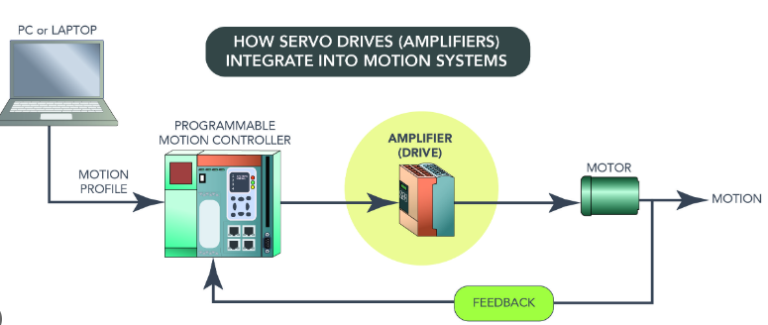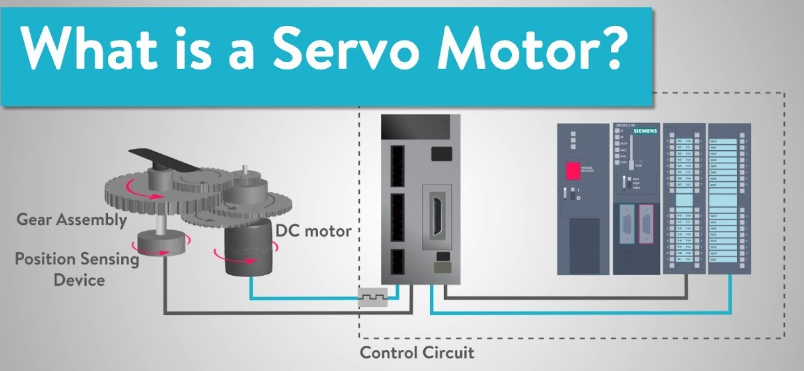
In the world of automation and control, precision and accuracy are paramount. Whether it’s in manufacturing, robotics, aerospace, or countless other industries, the ability to precisely control the position, speed, and torque of machinery is crucial. This is where servo systems come into play. Servo systems are a vital component of modern industrial automation, providing the means to achieve unparalleled precision and control in a wide range of applications. In this comprehensive introduction, we will delve into the world of servo systems, exploring their fundamental principles, components, applications, and the significance of this technology in various industries.
I. Understanding the Basics of Servo Systems
A servo system, short for servomechanism, is a closed-loop control system designed to maintain precise control over the position, speed, and torque of a mechanical component, typically a motor or an actuator. Unlike open-loop systems, which lack feedback mechanisms, servo systems continuously monitor the actual performance of the controlled element and make real-time adjustments to ensure it follows a desired trajectory or setpoint. This closed-loop feedback loop is at the core of servo systems and is what makes them so powerful.
Components of a Servo System:
A typical servo system comprises several key components:
Actuator: This is the mechanical component that performs the desired work, such as moving a robotic arm or controlling the position of a CNC machine tool. Common actuators include electric motors, hydraulic cylinders, and pneumatic actuators.
Controller: The controller is the brain of the system. It receives commands and feedback from sensors, processes this information, and generates control signals to drive the actuator. It makes decisions in real-time to maintain the desired state of the system.
Feedback Sensors: These sensors play a pivotal role in providing the controller with information about the actual state of the system. Common feedback sensors include encoders, resolvers, potentiometers, and Hall effect sensors.
Power Amplifier: The power amplifier amplifies the control signals generated by the controller to a level that can drive the actuator effectively. It ensures that the actuator receives enough power to carry out its tasks.
Load: The load represents the work that the actuator is supposed to perform. Understanding the load is crucial for the controller to make precise adjustments to the actuator’s behavior.
Working Principles of Servo Systems:
Servo systems operate on the principle of negative feedback control. The basic idea is to compare the actual position, speed, or torque of the actuator (as detected by the feedback sensor) with the desired setpoint and use this error to adjust the control signal to the actuator. This feedback loop ensures that the system continually corrects any deviations from the desired performance.
For instance, in a positioning application, if a CNC machine needs to move a cutting tool to a specific location, the servo system continually measures the tool’s actual position and compares it to the desired position. If there is a deviation, the controller adjusts the motor’s speed and direction to minimize the error until the tool reaches the target position.

II. Significance of Servo Systems in Modern Industry
The significance of servo systems in modern industry cannot be overstated. These systems have revolutionized industrial automation, manufacturing processes, and robotics. Here are some key areas where servo systems play a critical role:
Precision Manufacturing:
Servo systems are widely used in precision manufacturing processes, such as CNC machining, 3D printing, and semiconductor manufacturing. Their ability to control the position and speed of cutting tools and manufacturing equipment with high accuracy ensures that the end products meet stringent quality standards.
Robotics:
In the realm of robotics, servo systems are the backbone of robotic arm control. They enable robots to perform intricate tasks with precision, from welding and assembly to delicate surgeries and even art creation.
Aerospace and Defense:
The aerospace and defense industries rely on servo systems for controlling various critical components, including flight control surfaces, radar antennas, and weapon systems. Servo systems play a pivotal role in maintaining the stability and maneuverability of aircraft and other military platforms.
Medical Devices:
The medical field benefits from servo systems in the development of precise and reliable medical devices. These systems are essential for robotic surgeries, diagnostic equipment, and drug delivery systems.
Packaging and Printing:
Servo systems are instrumental in the packaging and printing industries for accurate label placement, packaging, and high-speed printing. They ensure that each product is labeled and packaged with precision.
Automated Material Handling:
In logistics and material handling, servo systems control conveyor belts, robotic pick-and-place systems, and other equipment to optimize the flow of goods with minimal errors and high throughput.
Renewable Energy:
Servo systems are used in renewable energy applications, such as solar tracking systems and wind turbine control, to ensure that energy generation is maximized through optimal positioning and tracking.
Automotive Manufacturing:
The automotive industry relies on servo systems for tasks like welding, painting, and assembly. These systems help achieve consistent quality and efficiency in vehicle production.
III. Types of Servo Systems
Servo systems come in various types, each tailored to specific applications and requirements. The choice of servo system type depends on factors such as precision, speed, power, and environmental conditions. Here are some common types of servo systems:
DC Servo Systems:
DC servo systems use DC (direct current) motors and are known for their simplicity and ease of control. They are often used in applications where moderate precision and speed are sufficient.
AC Servo Systems:
AC servo systems employ AC (alternating current) motors and are preferred for high-power applications. They are known for their efficiency and ability to provide high torque at high speeds.
Brushed Servo Systems:
Brushed servo systems feature motors with brushes that make physical contact with the commutator. These systems are less expensive but may require more maintenance due to brush wear.
Brushless Servo Systems:
Brushless servo systems use motors without brushes, resulting in lower maintenance and longer service life. They are commonly employed in applications where reliability is critical.
Linear Servo Systems:
Linear servo systems differ from rotary servo systems in that they convert rotary motion into linear motion. They are used in applications requiring precise linear positioning, such as CNC machines and 3D printers.
Rotary Servo Systems:
Rotary servo systems are the most common and versatile type, using rotational motion to control various mechanical components. They are used in a wide range of applications, including robotics and industrial automation.
Applications of Servo Systems
Servo systems find applications in a multitude of industries and sectors due to their precision, adaptability, and reliability. Here are some notable applications across different domains:
Industrial Automation:
In manufacturing and industrial settings, servo systems are the driving force behind automated processes, ensuring precise control of robotic arms, conveyors, and machining equipment.
Robotics:
Servo systems enable robots to execute tasks with incredible precision, from picking and placing objects to performing complex surgical procedures and even exploring challenging environments in space and underwater.
Aerospace and Defense:
In the aerospace sector, servo systems are used in flight control systems, missile guidance, and satellite positioning. They are vital for ensuring the safety and performance of aircraft and defense systems.
Medical Devices:
Surgical robots and medical imaging equipment rely on servo systems to provide precise and stable movement, contributing to the success of minimally invasive surgeries and accurate diagnostics.
Packaging and Printing:
In the packaging industry, servo systems control packaging machines, ensuring that products are accurately labeled and packaged. Similarly, high-speed printers rely on servo systems for precise paper feeding and image positioning.
Automated Material Handling:
Conveyor systems and automated warehouses depend on servo systems to transport goods efficiently and without errors.
Renewable Energy:
Solar tracking systems and wind turbines employ servo systems to optimize the positioning of solar panels and rotor blades for maximum energy capture.
Automotive Manufacturing:
Servo systems are essential in automotive assembly lines, where they control tasks like welding, painting, and assembly of vehicle components with precision and speed.
Food and Beverage Processing:
Servo systems are used in food and beverage production to control the movement of production lines, ensuring consistent quality and packaging.
Textile Industry:
Textile machinery relies on servo systems for tasks like thread tension control, fabric handling, and precise pattern creation in textile products.
Entertainment:
In the entertainment industry, servo systems are used in devices like camera gimbals and animatronic figures to achieve lifelike motion and control.
Scientific Research:
Scientific instruments, such as electron microscopes and telescope mounts, depend on servo systems for precision and stability during experiments and observations.
V. Challenges and Advancements in Servo Systems
While servo systems have made significant advancements and have become indispensable in various industries, there are still challenges and areas for improvement. Some of these challenges include:
Cost: High-precision servo systems can be expensive to implement, which may limit their adoption in smaller businesses or applications with tight budgets.
Complexity: Servo systems can be complex to set up and maintain, requiring skilled technicians and engineers to ensure optimal performance.
Energy Efficiency: Enhancing the energy efficiency of servo systems is an ongoing concern, especially in applications that demand continuous operation.
Integration: Compatibility and integration with other control systems and software can be a challenge, particularly in industries with diverse automation technologies.
To address these challenges, ongoing advancements in servo systems include:
Cost Reduction: Manufacturers are continually working to make servo systems more cost-effective, allowing a broader range of industries to benefit from their precision.
Simplified User Interfaces: User-friendly interfaces and software are being developed to make the setup and maintenance of servo systems more accessible to a wider range of users.
Energy-Saving Features: The development of energy-efficient components and the optimization of control algorithms are making servo systems more environmentally friendly and cost-effective.
Interconnectivity: Advancements in networking and communication protocols are improving the integration of servo systems into larger automation ecosystems.
VI. Conclusion
In the ever-evolving landscape of automation and control, servo systems have emerged as a cornerstone of precision and reliability. These closed-loop control systems, with their ability to maintain precise control over the position, speed, and torque of mechanical components, are transforming industries as diverse as manufacturing, robotics, aerospace, and healthcare.
This introduction has shed light on the fundamental principles, components, applications, and significance of servo systems. We explored their role in ensuring precision manufacturing, powering robotic advancements, enhancing aerospace and defense technologies, and improving medical procedures. Servo systems are the invisible hands that shape the future of automation, promising even greater advancements in the years to come.
As we move forward, challenges such as cost, complexity, and energy efficiency will continue to drive innovation in the field of servo systems. Advancements in cost reduction, user interfaces, energy-saving features, and interconnectivity will further expand the reach and impact of servo systems in various industries, making them even more accessible and efficient.
Servo systems are not merely a technological tool; they are the heartbeat of modern industry, ensuring that the machines and devices we rely on perform with the precision and accuracy that define the 21st century. As the demand for precision and automation continues to grow, so too will the role and importance of servo systems in our daily lives.
